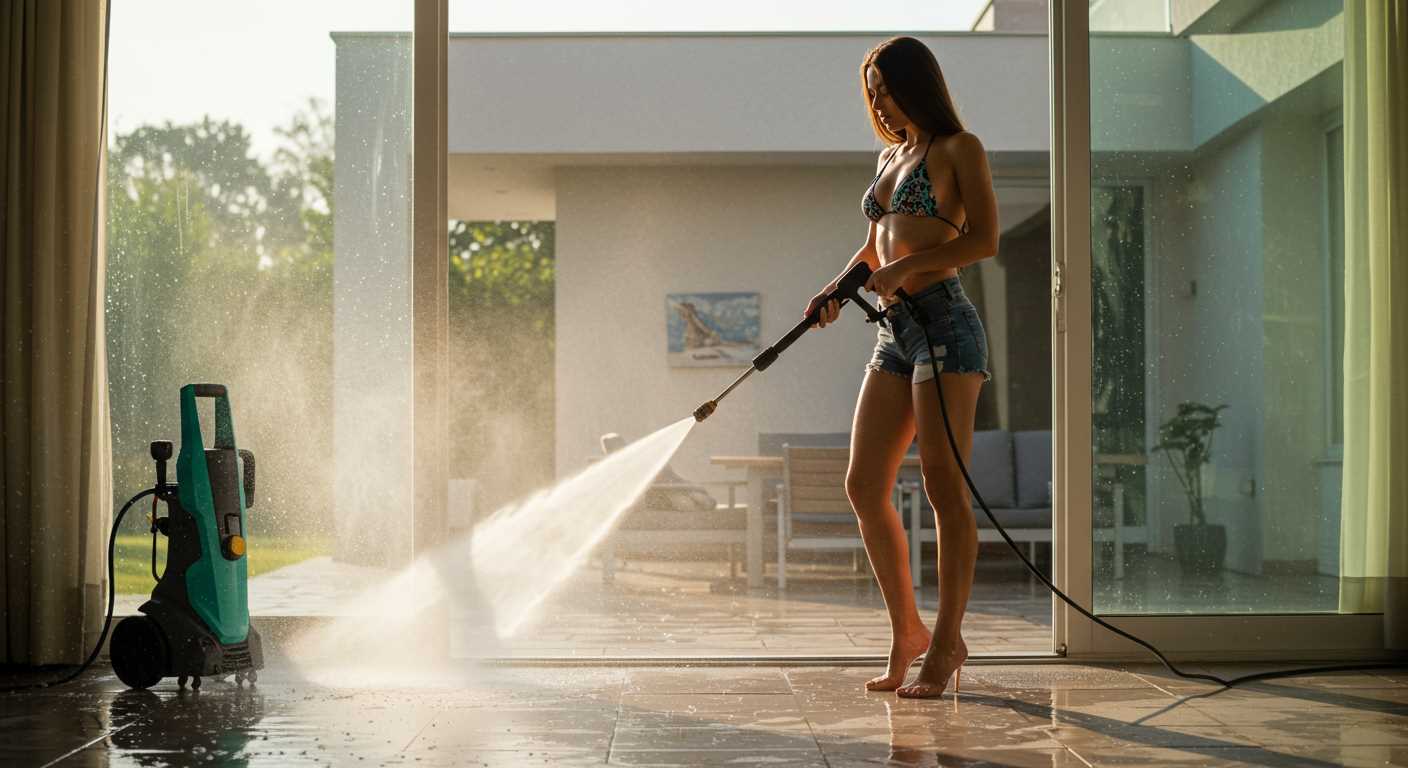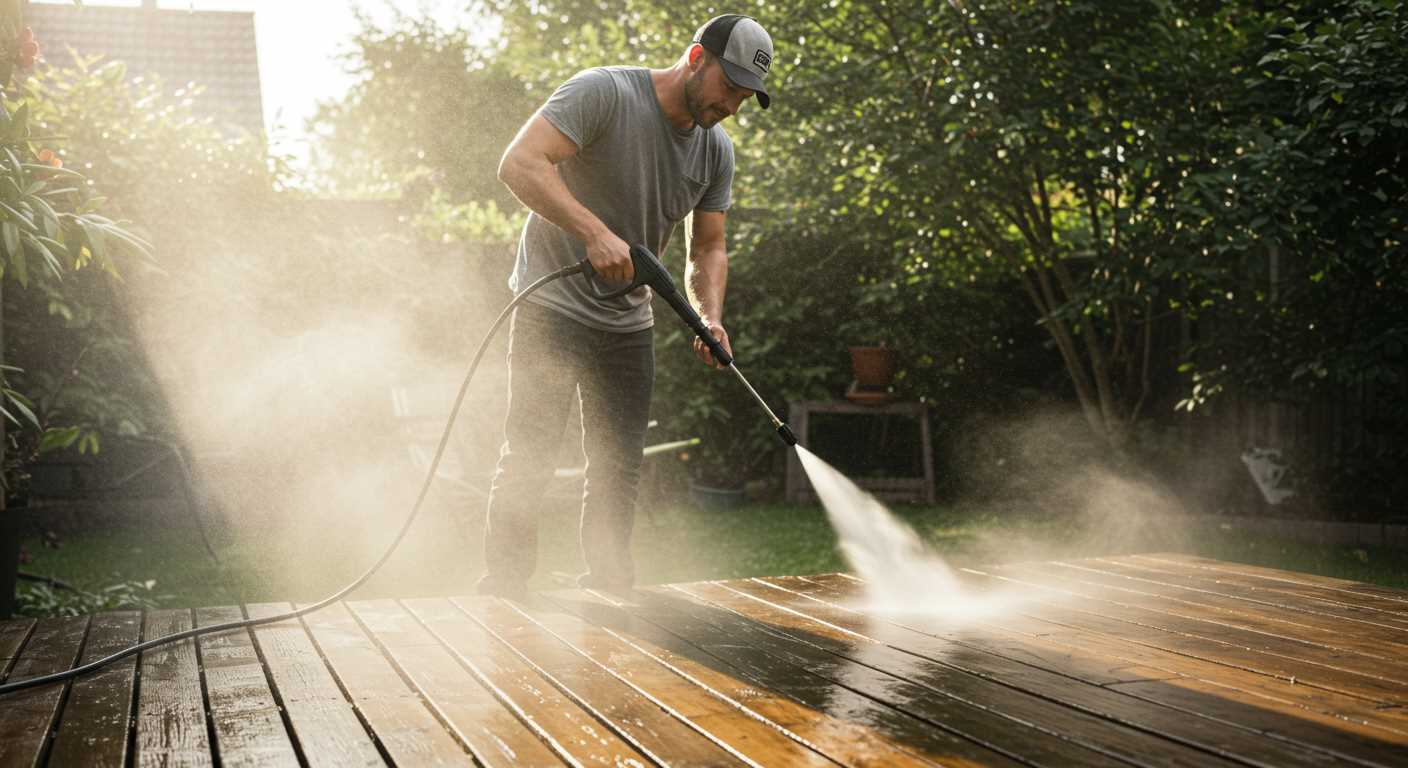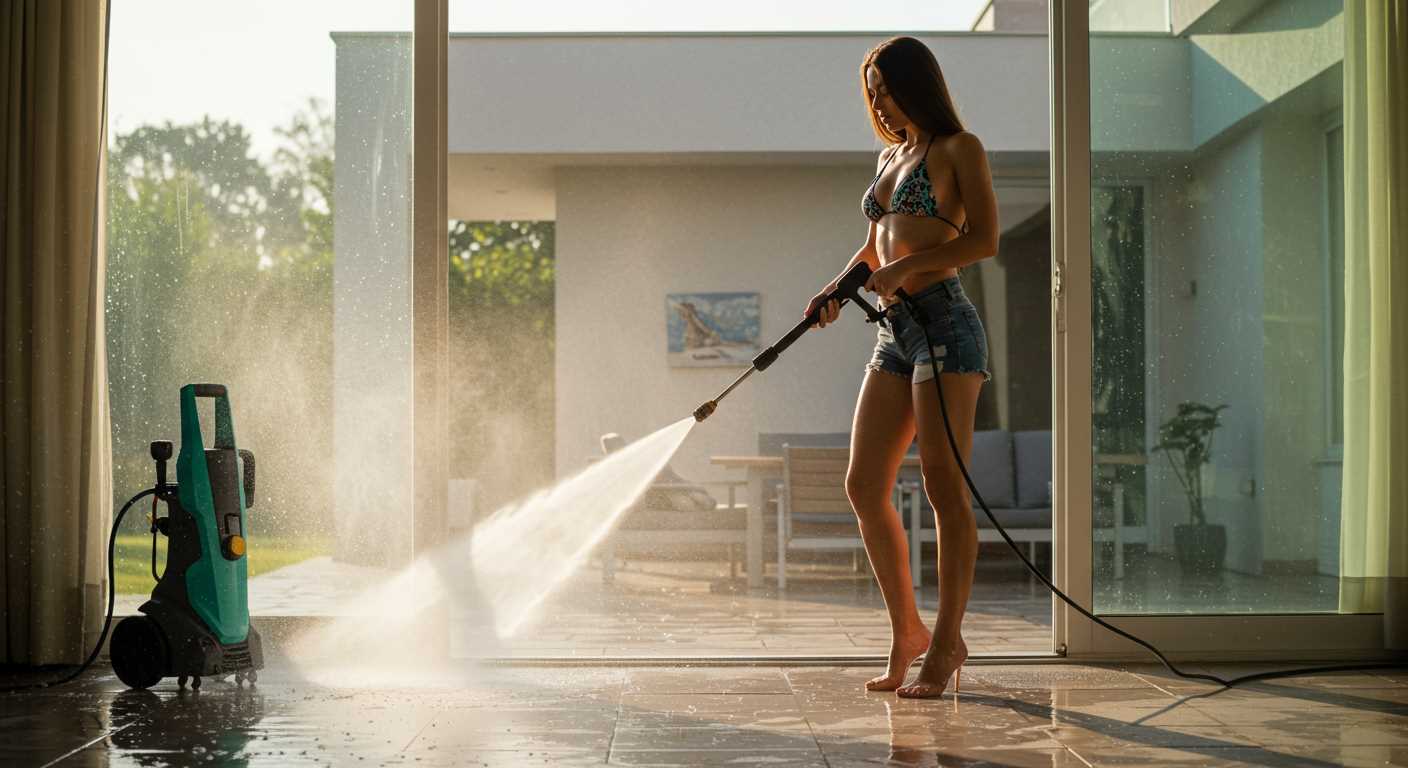


Absolutely, high-pressure cleaning equipment can be an effective solution for clearing blocked pipes. My experience in the cleaning equipment industry has shown that the force generated by these machines can dislodge stubborn blockages, often caused by grease, debris, or tree roots. With the right attachments, achieving a clear flow in your plumbing system is not just possible; it becomes a straightforward task.
During my years of testing various models, I discovered that a rotating nozzle can enhance the cleaning process significantly. This accessory creates a powerful jet that spins, allowing the water to reach all angles within the pipe. In one instance, I faced a particularly challenging blockage in my own home. Using a unit equipped with a rotating nozzle, I managed to clear the obstruction in minutes, transforming what could have been a costly plumbing bill into a DIY success story.
Safety and preparation are key. Always wear protective gear and ensure the area is clear of obstacles before starting. It’s also advisable to check the specifications of your plumbing system; some older pipes may not withstand the intense pressure. A quick visual inspection can save time and potential damage.
In conclusion, this method is not only practical but also economical. With the right knowledge and equipment, tackling a clogged pipe becomes manageable, making high-pressure cleaning a valuable addition to any homeowner’s toolkit.
Understanding the Mechanics of Pressure Washing
To tackle stubborn blockages, harnessing the science behind high-pressure water jets is key. The principle relies on directing a concentrated stream of water to dislodge debris. The nozzle plays a pivotal role; a narrow opening increases the velocity, creating a powerful impact on the obstruction.
During my years in the cleaning equipment industry, I discovered that different nozzles have distinct applications. For heavy clogs, a rotating nozzle can be particularly effective. It combines high pressure with a sweeping motion, which helps break apart solidified materials. I remember a situation where a client struggled with a severely obstructed sewer line. Switching to a rotating nozzle made all the difference, transforming an arduous task into a manageable one.
Water temperature can enhance performance too. Hot water penetrates grease and fat more efficiently than cold. In my experience, using heated water not only speeds up the process but reduces the amount of detergent required. I once tackled a restaurant’s grease trap, where hot water significantly reduced the build-up, making the cleaning process quicker and more thorough.
Pressure settings are crucial. Too high a setting can damage pipes, while too low might not dislodge the material. I always advise starting at a moderate setting and adjusting based on the response. One memorable instance involved a residential drain that appeared deceptively simple. After assessing the situation and gradually increasing the pressure, we successfully cleared the blockage without any damage.
Finally, attachment selection can greatly influence the outcome. I’ve experimented with various tools, and using specific attachments designed for drain clearing can enhance effectiveness. For instance, a hose with a jetter attachment can navigate through tight bends, providing a deeper clean than standard nozzles.
Mastering these mechanics transforms the task from a daunting challenge into a straightforward solution. Understanding the nuances of equipment and technique leads to successful outcomes, ensuring that blockages are effectively addressed without causing harm to the infrastructure.
Identifying the Types of Blockages Suitable for Pressure Washing
Not every obstruction in a drainage system is appropriate for high-pressure cleaning. Understanding what can be effectively cleared is essential for achieving desirable results without causing damage.
- Organic Material: Blockages caused by food waste, leaves, and other biodegradable matter often respond well to high-pressure streams. These materials can break down quickly under intense water flow.
- Soap Scum and Grease: Accumulations of soap residues and kitchen grease can be dislodged effectively. High-velocity water can emulsify these substances, pushing them through the pipe.
- Small Roots: Infiltration from tree roots can sometimes be addressed. While a high-pressure jet won’t eliminate the entire root system, it can clear smaller roots that have recently penetrated pipes.
However, not all situations are suitable for this method. Certain types of blockages require caution:
- Heavy Roots: Larger root systems may need mechanical removal methods as high-pressure water can exacerbate the problem by pushing roots further into the system.
- Structural Damage: Pipes that are cracked or damaged may worsen under high pressure. Inspect the condition of the pipes before attempting to clear any blockage.
- Foreign Objects: Items such as toys or stones can be pushed further down the pipe, leading to more significant issues. Manual retrieval is often the better option.
From personal experience, I’ve encountered blockages of all types. One memorable instance involved a kitchen drain clogged with a mix of grease and food debris. A high-pressure stream made quick work of it, restoring flow in minutes. Conversely, I once faced a situation where tree roots had invaded the system. The high-pressure method only caused the roots to spread, leading to a more complex issue. Choosing the right approach based on the type of blockage is critical for effective results.
Choosing the Right Pressure Washer for Drain Unblocking
For tackling stubborn blockages, selecting a suitable high-pressure cleaning unit is critical. I’ve found that the most effective models feature a minimum pressure of 2000 PSI and a flow rate of 2.5 GPM. This combination ensures that stubborn debris is dislodged efficiently without causing damage to pipes.
Look for units equipped with a rotating nozzle. This design increases the cleaning area and improves the impact force on blockages. In my experience, a nozzle with adjustable pressure settings offers versatility for different types of obstructions, allowing for a gentler approach when necessary.
Consider the hose length as well. A longer hose provides the flexibility to reach deeper into the plumbing system without the need to manoeuvre the entire unit. I often recommend hoses that are at least 25 feet long for residential applications.
Electric models are quieter and require less maintenance, making them ideal for home use. However, for more severe blockages, gas-powered options deliver higher pressure and greater portability. I once used a gas model to clear a particularly stubborn blockage, and the difference in power was remarkable.
Don’t overlook the importance of attachments. A dedicated drain cleaning attachment or sewer jetter is invaluable. I’ve personally seen how these attachments can make a significant difference in clearing clogs effectively.
Finally, always check the manufacturer’s guidelines to ensure compatibility with your plumbing system. This step can prevent costly repairs down the line. Keep in mind that maintaining your equipment is equally important. Regular cleaning and proper storage extend the life of your machine.
After addressing your plumbing needs, consider enhancing your cleaning routine with the best car wax for pressure washer to ensure your surfaces shine while you tackle those stubborn spots.
Preparing the area before using a pressure washer
Before tackling any blockage, ensure the surrounding area is clear. Remove any obstacles such as furniture, plants, or decorative items that may obstruct access. This not only protects your belongings but also provides a safe working environment.
Next, check for any nearby electrical outlets or cables. It’s crucial to keep power sources at a safe distance from water to avoid hazards. If necessary, use extension cords rated for outdoor use, keeping them elevated and away from any water flow.
Inspect the drainage system prior to starting. Look for any visible signs of damage or wear, like cracks or loose fittings. If you notice anything concerning, address it before applying high-pressure techniques, as this could worsen the problem.
Wear appropriate protective gear, including gloves, safety goggles, and waterproof boots. This ensures personal safety from potential debris and water splashes. I once underestimated the power of water jets and ended up with a muddy splash that ruined my shoes–lesson learned!
It’s wise to conduct a brief test run on a less sensitive surface nearby. This helps familiarise yourself with the equipment and its operation, ensuring a smoother experience when you focus on the actual blockage.
Finally, have a plan for managing the water runoff. Position buckets or hoses to redirect the flow away from your workspace and prevent additional mess. During my first attempt, I neglected this step and ended up with a flooded area, which added extra cleanup time.
Step-by-step guide to using a pressure washer on drains
Begin with gathering the necessary equipment. A strong model with adjustable settings is critical. For optimal results, consider acquiring a dynamic spray nozzle for your pressure washer.
1. Assess the situation
Before initiating the cleaning process, inspect the drainage area for visible blockages. If you can identify the type of obstruction, it will aid in selecting the correct technique and nozzle. Roots, grease, or debris all require different approaches.
2. Set up the equipment

Connect the machine to a water source. Ensure all connections are tight to prevent leaks. Adjust the pressure to a moderate level to avoid damage to the plumbing. This is particularly important in older systems that may be more fragile.
| Pressure Level | Recommended Use |
|---|---|
| 1000-1500 PSI | Light blockages (dirt, leaves) |
| 2000-2500 PSI | Moderate blockages (grease, soap) |
| 3000 PSI and above | Heavy blockages (roots, large debris) |
Ensure safety gear is worn, including goggles and gloves. The high-speed water can cause injury if not handled properly. Position yourself securely, aiming the nozzle towards the drain entrance.
3. Start cleaning
Begin with short bursts of water, gradually increasing the duration as needed. Move the nozzle around to cover the entire opening. If the flow doesn’t improve, switch to a more powerful setting or a different nozzle attachment.
Occasionally pause to check for progress. If water starts to flow freely, continue to rinse the area to flush out remaining debris. After the process, inspect the drain to ensure it is clear.
Finally, clean up any residual mess and store the equipment properly. Regular maintenance of the drains can prevent future blockages, making this a worthwhile addition to your cleaning routine.
Safety Precautions When Pressure Washing Drains
Before tackling any cleaning job with high-powered equipment, ensuring personal safety is paramount. I’ve had my share of experiences, and I can’t stress enough the importance of following safety guidelines to prevent accidents. Here are some crucial precautions to consider:
Protective Gear
- Wear safety goggles to shield your eyes from debris and high-pressure water spray.
- Use gloves designed for high-pressure tasks; they provide grip and protect against abrasions.
- Don sturdy footwear with slip-resistant soles to maintain grip on wet surfaces.
- A long-sleeved shirt and pants can protect your skin from water pressure and sharp objects.
Equipment Checks
- Inspect the hose and connections for any leaks or damage before starting. A faulty hose can lead to dangerous situations.
- Ensure the nozzle is securely attached to avoid unexpected disconnections during operation.
- Check the power source; use GFCI outlets when working outdoors to prevent electrical shocks.
While operating the equipment, maintain a safe distance from the nozzle when directing the water. The force can cause injury if aimed at body parts or others nearby. I recall a colleague who underestimated the power and ended up with a nasty bruise–definitely not an experience you want to have.
Always keep bystanders at a safe distance. It’s easy to get caught up in the task and forget about those around, but flying debris can pose significant risks. I usually place cones or signs around the work area to alert passersby.
Lastly, stay alert for any signs of fatigue. It’s easy to become complacent, especially during prolonged use. Taking regular breaks allows for better focus and reduces the risk of accidents. After all, a moment of distraction can lead to an injury that could’ve been avoided.
Common mistakes to avoid during the process
Using high-pressure equipment for clearing blockages can be effective, but there are pitfalls that can lead to damage or ineffectiveness. One major error is applying excessive force without understanding the system’s limits. High pressures can crack pipes or cause joints to separate, leading to costly repairs. Always start with the lowest setting and adjust as necessary.
Ignoring the right attachments
Choosing the incorrect nozzle is another frequent misstep. A wide-angle nozzle may not provide the necessary focus to break up stubborn clogs. Opt for a narrow, penetrating nozzle designed specifically for the task at hand. This will ensure the jet of water can reach deeper into the pipes and dislodge debris effectively.
Neglecting safety measures
Overlooking personal safety is a serious concern. Always wear protective gear, including goggles and gloves. High-pressure jets can cause injuries if they rebound or if debris is ejected. Additionally, ensure the work area is clear of obstacles and bystanders to prevent accidents.
Failing to assess the blockage type can lead to wasted effort. Not all clogs respond well to water jets. Organic matter may break apart easily, while solid items or roots may require alternative methods. Always evaluate the situation before proceeding.
Lastly, not having a plan for cleaning up after the operation can leave you in a mess. Water and debris can create slippery conditions. Have a strategy for managing runoff and debris to maintain a safe working environment.
Alternative methods for drain unblocking if pressure washing fails
If high-pressure cleaning doesn’t resolve the blockage, consider these alternatives:
Start with a plumber’s snake. This tool is designed to reach deeper into pipes, effectively breaking apart stubborn clogs. Insert the snake into the drain and rotate it as you push forward. This motion helps to break up the blockage.
Next, try a wet/dry vacuum. These machines can effectively remove debris from the drain. Make sure to create a tight seal around the drain opening to maximise suction. This method is particularly useful for removing loose materials like leaves or dirt.
Enzyme-based cleaners are another option. These eco-friendly products contain natural enzymes that digest organic material in clogs. Follow the manufacturer’s instructions for the best results, and allow time for the enzymes to work through the system.
For more stubborn issues, consider using a drain auger. Unlike a basic snake, an auger can clear blockages caused by tough materials like tree roots. It features a more robust design that can tackle heavier clogs.
Here’s a quick comparison of these methods:
| Method | Effectiveness | Ease of Use | Cost |
|---|---|---|---|
| Plumber’s Snake | High | Moderate | Low |
| Wet/Dry Vacuum | Moderate | Easy | Moderate |
| Enzyme Cleaner | Moderate | Very Easy | Low |
| Drain Auger | Very High | Moderate | High |
Another effective approach is using hot water. Pouring boiling water down the drain can help dissolve grease and soap build-up. This method is most effective for minor blockages.
Lastly, if all else fails, contacting a professional is often the best route. They possess specialised equipment and expertise to handle complex situations that DIY methods might not resolve.




.jpg)
.jpg)


